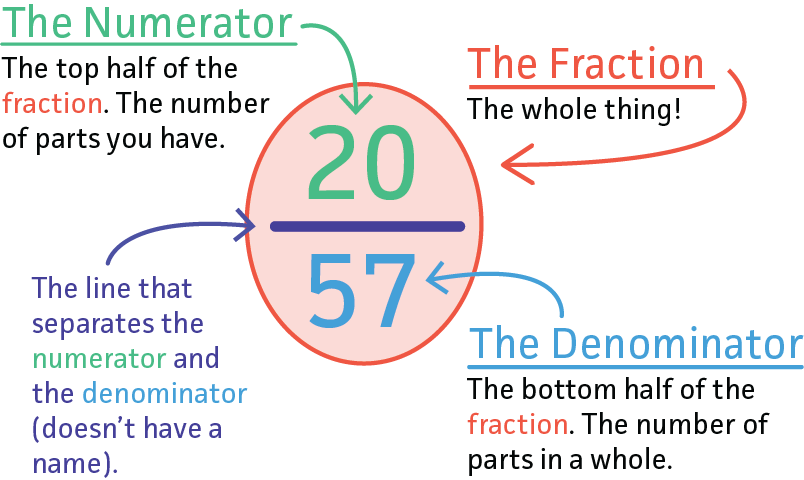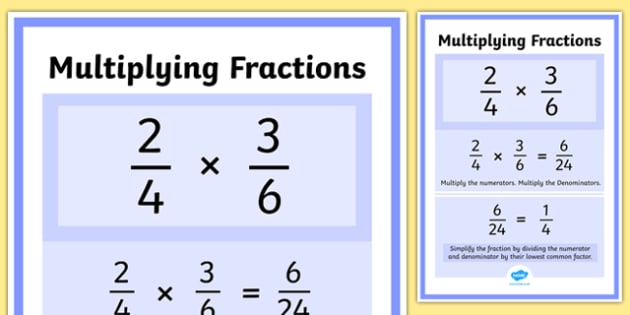After the students become familarized with the song the students should be presented with the three step process of multiplying fractions.
Steps for Multiplying Fractions:
1. Multiply the numerator.
2. Multiply the denomicator.
3. Reduce the fraction if necessary.

After we revisit the parts of a fraction from the example of above I would then give students an example of how to multiple a fraction by used the three step process.

Below is a work sheet that can be given to students for them to practice on.

For an even fun activity you can group students in to pairs and have them give each other there own fraction multiplication problems by providing them with a blank sheet.
CCSS.MATH.CONTENT.5.NF.B.4
Apply and extend previous understandings of multiplication to multiply a fraction or whole number by a fraction
CCSS.MATH.CONTENT.5.NF.B.4.A
Interpret the product (a/b) × q as a parts of a partition of q into b equal parts; equivalently, as the result of a sequence of operations a × q ÷ b. For example, use a visual fraction model to show (2/3) × 4 = 8/3, and create a story context for this equation. Do the same with (2/3) × (4/5) = 8/15. (In general, (a/b) × (c/d) = (ac)/(bd).
This post is super informative! I really liked your examples and the way the examples clearly defined the parts of a fraction. I would totally use the one image in my classroom someday for the student to have a visual representation of the parts of a fraction while they are learning and doing word problems like finding the denominator. I liked how you included the steps for multiplying fractions using the 3-step process, it’s nice to be able to show the students a simple way to multiply the fractions. It was also helpful that you included the simplification of the fraction in the one example. Great post!
ReplyDelete